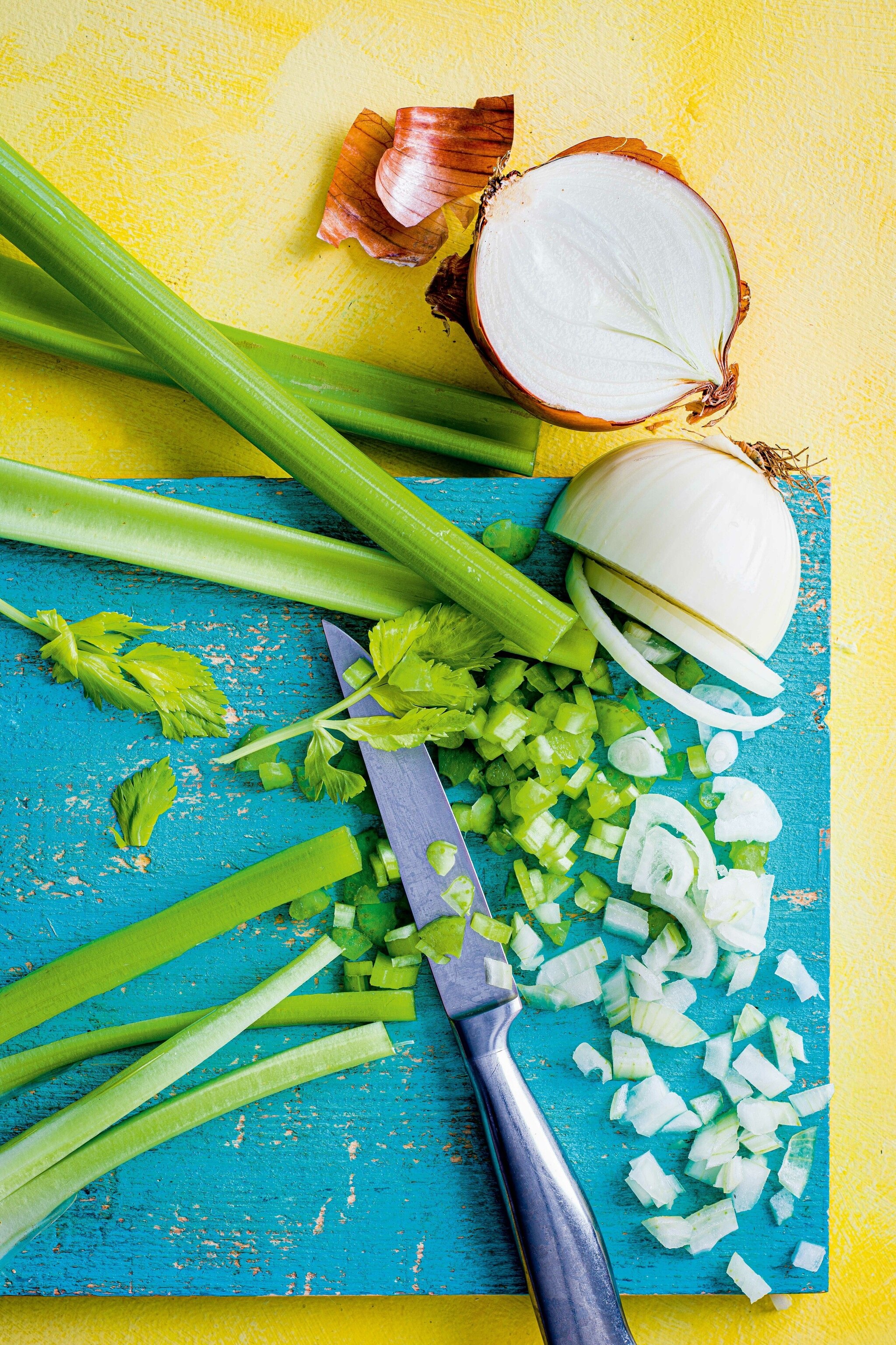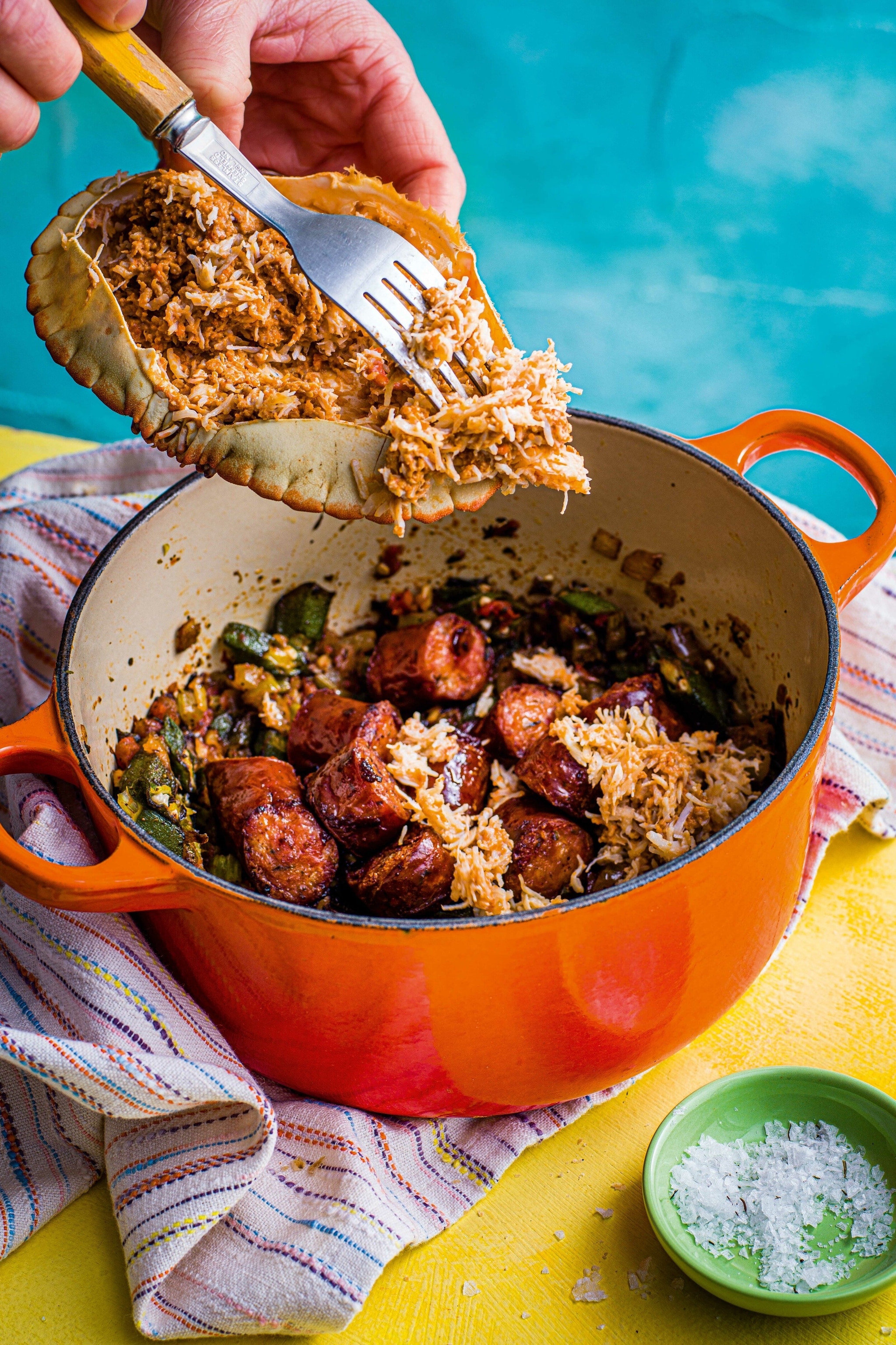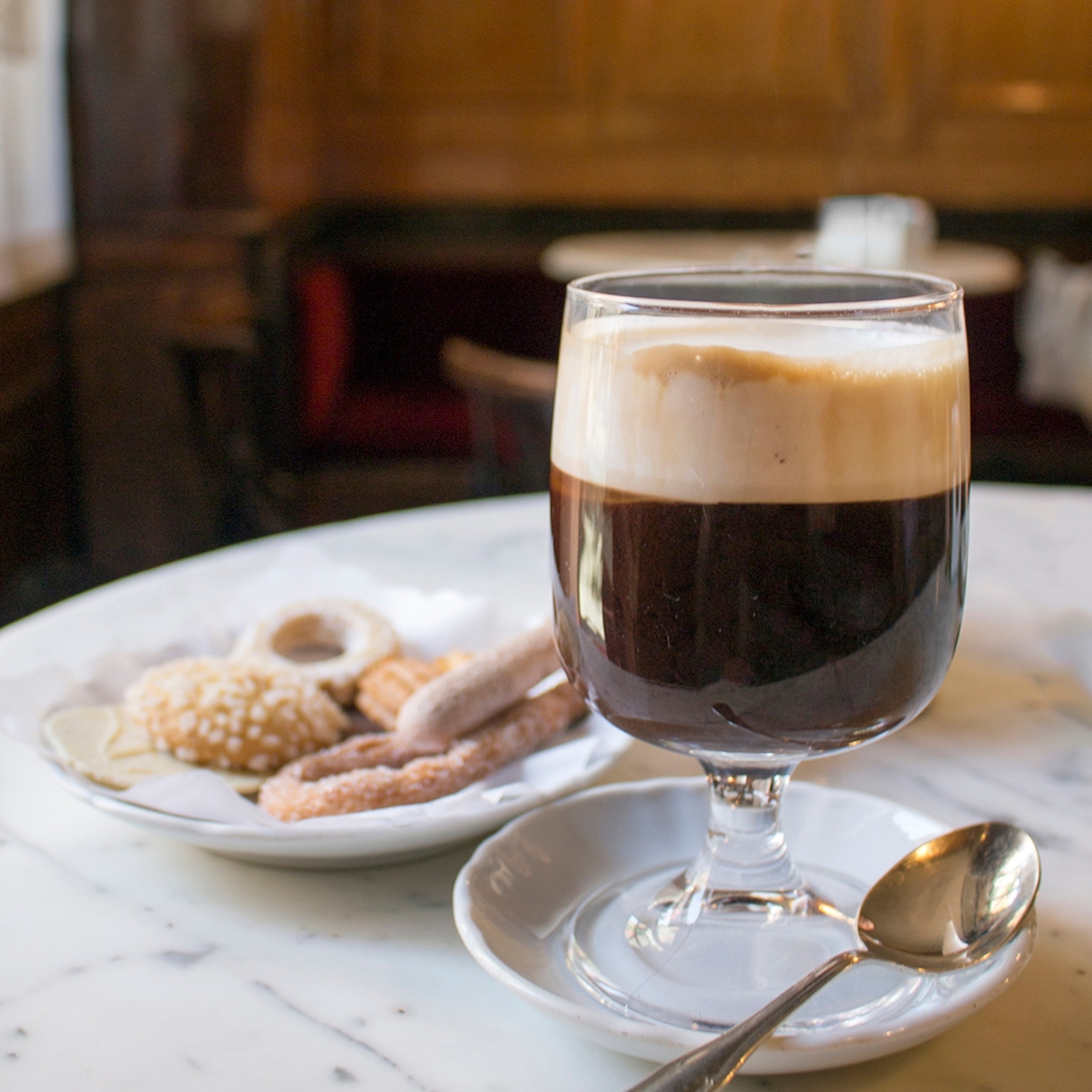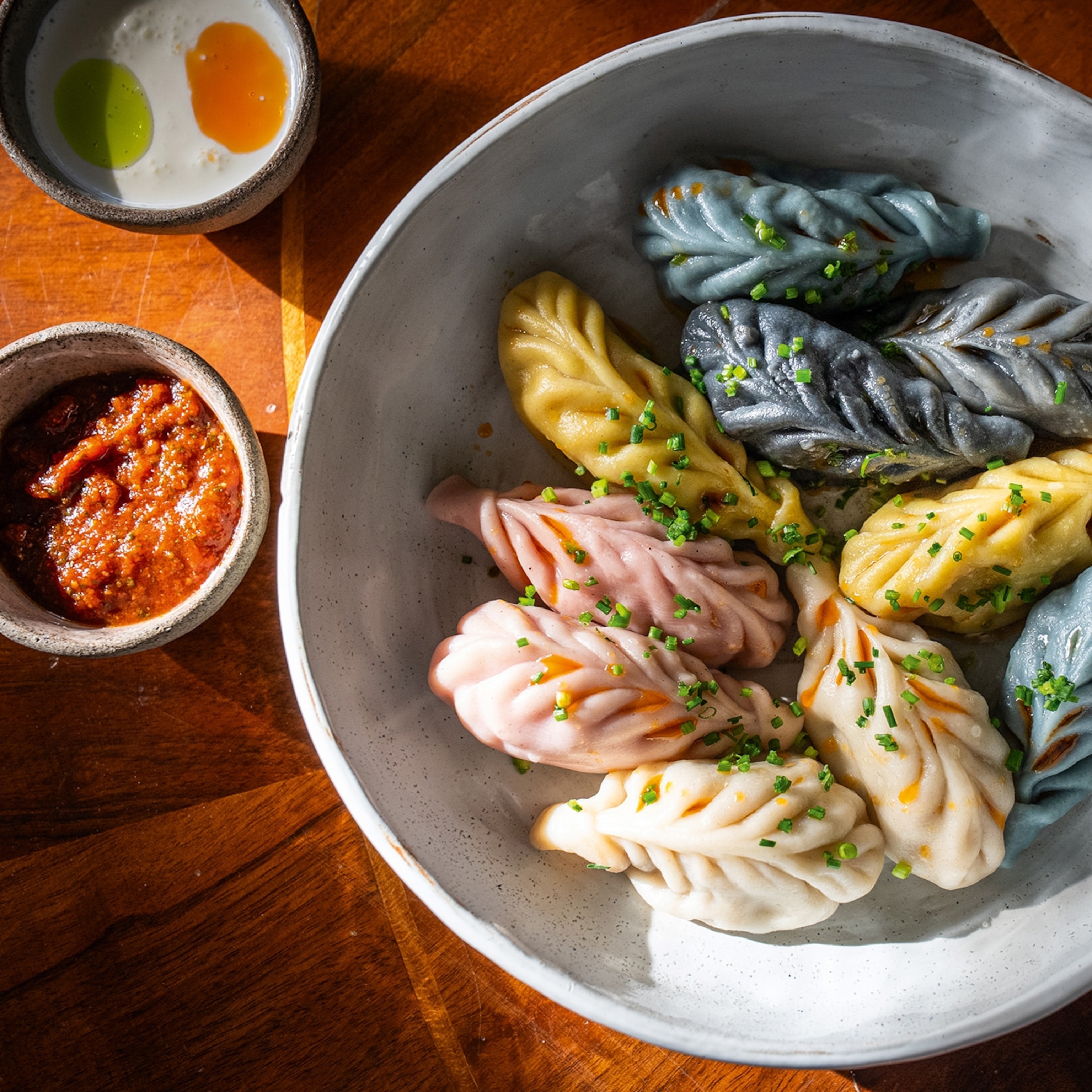
Deconstructing gumbo, Louisiana's beloved state dish
With influences ranging from Native American to African and ingredients that might include seafood and sausages, or occasionally eggs and greens, Louisiana’s beloved state dish is notoriously hard to pin down.
Gumbo is a dish that resists definition. For every statement of truth about it, there exists an opposing statement of truth. It’s sometimes served as a soup course, while at other times it’s the centrepiece of a meal. It’s casual, gather-around-the-pot party food, yet it’s also formal, worthy of holiday tables and fine china. It’s always served with rice, except when it comes with potato salad or cornbread.
The contradictions don’t end there. The official dish of Louisiana, gumbo is served in practically every restaurant in the state with a locally themed menu. But for many Louisianians, this soup (or is it a stew? Many would argue it’s somewhere in between) is strictly to be made and eaten at home. It can be seafood-heavy or meaty, fired up with cayenne pepper or subtly spiced, thin and delicate or viscous and gravy-like.
These varying ideas about the perfect gumbo stir up light-hearted debate in Louisiana and along the Gulf Coast, where the dish has for centuries been as much a part of life as swamps and mosquitoes. But while gumbo refuses to be tied to a single recipe, it’s inarguably a dish of community: it has cross-cultural significance, a relevance on every Louisiana table.
Perhaps predictably, gumbo’s provenance is as murky as its broth. US author Mary Randolph’s 1824 book, The Virginia Housewife: Or Methodical Cook, is the first cookbook to include a recipe for a dish called ‘gumbo’ — essentially stewed okra with butter. It wasn’t until the turn of the 20th century, however, that written recipes began to reflect what the dish looks and tastes like today.
From the early days of colonisation, Louisiana has been a cultural melting pot, and to this day gumbo remains a flexible, constantly evolving medium: it adapts to whatever flavours and ingredients successive waves of immigrants bring to it. The Cajuns (people of French lineage, who arrived from Canada in the 1750s) claim it as their own, as do the Creoles (descendants of early immigrants to Louisiana, often of mixed race), and even the Sicilians, Italians, Germans and Irish claim they’ve had a hand in it.

Three main cultural influences come to the fore, however, both in the historical record and in the bowl: French colonialism in the 1800s and the subsequent African slave culture, plus the Native American cultures that predated both of these influences in the American South. This trio of influences is most clearly observed in gumbo’s characteristic thickening agents: roux, okra and filé. Nearly every gumbo contains at least one of these (some incorporate all three), and these thickenings offer further clues as to the dish’s origins.
Many historical accounts offer bouillabaisse, the Provençal fish stew, as evidence for France’s influence on gumbo. But while seafood does make its way into gumbo pots, that’s where the resemblance to bouillabaisse ends. Rather, France’s obvious contribution to gumbo is roux — flour cooked in hot fat (such as canola oil or lard) until it reaches the chef’s preferred shade of brown. The darker the roux, the richer its flavour and the thinner the broth; the lighter the roux, the less prominent the flavour and the thicker the broth.
The late Creole chef Leah Chase, the owner of New Orleans’ Dooky Chase’s Restaurant, used to liken the colour of her roux to the caramel shade of her skin. The broth in her Creole gumbo, whose production her descendants now oversee, is a mellow backdrop for an assortment of other ingredients, such as shrimp, crab, ham, hot sausage, bay and thyme. Meanwhile, the cooks at the Seafood Palace, in Lake Charles, near the Texan border in southwestern Louisiana, take the roux for their deep, dark seafood gumbo to almost black, making it the gumbo’s standout taste.

Africa’s contribution to gumbo, meanwhile, runs deep, most prominently with okra, whose seeds — according to legend — came to Louisiana in the pockets of African slaves. Whatever the truth of its journey from Africa to the American South, okra found friendly growing conditions in Louisiana’s subtropical climate. Like roux, okra both flavours and thickens a gumbo. It tastes grassy and vegetal, and cooking it with moisture releases a thick, sticky juice. In the glossary to her cookbook, The Welcome Table: African-American Heritage Cooking, culinary historian Jessica B Harris notes that ‘quingumbo’ is the name for okra in Bantu languages, spoken in the southern half of Africa. On the basis of gumbo’s possible etymology, many like to insist, therefore, that okra is an essential ingredient. It’s a compelling argument, but in practice, many worthy gumbos don’t feature it at all.
Filé powder, the cured and ground leaves of the sassafras tree, is the third thickening agent of cultural import. Some scholars believe Choctaw Indians were the first people to cook with filé powder, which Louisianians often call ‘gumbo filé’. Freshly ground filé has bright, spicy, lemon-tinged notes that stand up to — and balance out — gumbo’s heavier tones. Typically added by the chef at the end of cooking, or sprinkled over the dish by the eater, filé’s alchemy thickens gumbo to a stringy or ropy consistency that, depending on personal taste, is either essential or loathsome.
Frank Brigtsen, chef and co-owner of Brigtsen’s Restaurant in New Orleans, has a trick for avoiding filé’s stringiness while preserving its taste. For his filé gumbo, he adds the powder at the very start of cooking, sautéing it with the ‘holy trinity’ of seasoning vegetables: celery, onion and green pepper. This combination is to Louisianan cooking what mirepoix is to French cuisine. What’s left, Frank says, is “just the base essence flavour of the ground sassafras”.

Clearly, gumbo is something of a moveable feast, with many chefs and home cooks adding their own signature twists to the dish. The Indian restaurateur Arvinder Vilkhu, of Saffron NOLA, in New Orleans, serves a version accented with ginger, turmeric, coriander, curry leaf and Kashmiri chilli. Elsewhere in the city, at Cochon, co-owner and chef Donald Link — a Louisiana native — often serves a black-eyed pea and pork gumbo made with collard or mustard greens. At first glance this seems to buck tradition (neither legumes nor greens are common gumbo ingredients), yet it aligns with the Louisiana spirit of making do with whatever is available — providing it tastes good. Home cooks have been known to throw in anything from canned sausages to hard-boiled eggs.
With so many variations, how does one distinguish a gumbo from any other soup or stew? In addition to the thickeners and the ‘holy trinity’, herbs and spices play a key role. Garlic, thyme, bay, and black, red and white peppercorns are typical additions, while basil, oregano and paprika may also season the pot. While Louisiana has a reputation for spicy food, gumbo is more likely to be highly seasoned, meaning layers of flavour, rather than fieriness. Those who enjoy a lot of spice tend to add hot sauces, such as Tabasco, at the table instead.
In oral histories, restaurants and the bowl itself, it’s clear: when it comes to gumbo, there are few hard-and-fast rules. It’s an exciting, expansive, constantly evolving dish. As Scott Landry, a Louisiana-based ‘culinary entertainer’ who hosts on-stage cooking shows, put it in a 2007 interview: “One hundred Cajuns give you 150 recipes on how to make gumbo.”

Recipe: Frank Brigtsen’s prawn and okra gumbo with andouille
For this recipe from the chef-owner of Brigtsen’s Restaurant in New Orleans, you can either buy seafood stock or make your own. For homemade, source fresh head-on prawns, remove the heads and shells (reserving the meat for the gumbo), then put in a pot with 2L cold water. Bring to a boil, simmer for 30 mins, then strain.
Serves: 6 Takes: 2-3 hrs
Ingredients
135g andouille (or other smoked sausage), sliced into 2½cm-thick half-rounds
175ml vegetable oil
90g plain flour
4 tbsp mild olive oil
225g okra, trimmed and sliced into rounds
180g tinned plum tomatoes
1 large onion, peeled and finely diced
200g celery sticks, finely diced
1 bay leaf
2 garlic cloves, finely diced
¼ tsp dried thyme
½ tsp dried oregano
½ tsp dried basil
¼ tsp ground cayenne pepper
1.5L seafood stock
225g crab meat (a mix of white and brown is best)
250g shelled raw prawns
cooked white rice, to serve
Method
1. Heat oven to 175C, 155C fan, gas 3-4. Lay the sliced sausage on a shallow baking tray and cook in the oven for 35-40 mins, until edges turn brown. Set aside.
2. Add the vegetable oil to a small, heavy-based frying pan and place over a high heat. When the oil is about 175C, gradually add the flour, mixing constantly using a balloon whisk. (If you don’t have a thermometer, it’s hot enough when a pinch of flour sizzles in the oil.) Continue to whisk for 3-5 mins, until the roux turns the colour of peanut butter and begins to thicken. Reduce heat to low and continue whisking for a further 3-5 mins, until the roux turns a deeper caramel colour and thins out again. Turn up the heat to medium and continue to whisk, until the roux turns dark chocolate brown. Remove from heat and set aside, stirring the roux once or twice as it cools.
3. Add 2 tbsp of the olive oil to another frying pan and place over a high heat. Add the sliced okra and fry, stirring, for 4-5 mins, until it softens and begins to break up. Add the tomatoes and cook, still stirring, for 1-2 mins. Remove from heat and set aside.
4. Put the onion and celery into a large bowl and mix well. Heat the remaining 2 tbsp of olive oil in a large deep pan over a medium-high heat. Add half the onion-celery mixture and cook for 12-15 mins, stirring now and then, until the onions are caramelised. Add the remaining onion and celery and continue to cook for 4-5 mins until the second batch of onion turns soft and translucent.
5. Add the bay leaf, garlic, thyme, oregano, basil, cayenne, some salt and a good grinding of both black and white pepper (if you have it). Reduce the heat to low and cook for 2-3 mins.
6. Add half the okra-tomato mixture and cook, stirring, for 3-4 mins. Add the stock, crab meat and cooked sausage, and bring to the boil.
Drain off any excess oil from the roux. Gradually add the roux to the pan and whisk until fully incorporated. Simmer for 10 mins, until the stock thickens slightly.
7. Add the prawns and the remaining okra and tomato. Cook for 3-5 mins, until the prawns turn pink and are cooked through. Serve piping hot with a side of white rice.
Published in Issue 15 (spring 2022) of Food by National Geographic Traveller (UK)
Follow us on social media
Facebook | Twitter | Instagram







